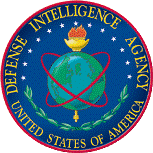United States Department of Defense
Date of this Version
7-1950
Document Type
Article
Citation
DA Booklet, A Guide to the Collection of Technical Intelligence (Part I), July 1950.
Abstract
This is a detailed, well-illustrated guide showing the range of weapons and equipment army technical intelligence was interested in, including:
- Armored vehicles
- Artillery
- Infantry small arms
- Mortars, antitank weapons, and grenades
- Mines, booby traps, and demolitions
- Ammunition
- Artillery rockets and rocket launchers
Notable lapses in this booklet are:
(a) Lack of guidance for using the booklet and
(b) The lack of mention of:
- Radio and electronic equipment
- Chemical, biological, and radiological warfare equipment
- Bridge and stream-crossing equipment
- Construction equipment
- Trucks and other transportation equipment
- Quartermaster type equipment
- Specialized equipment for Arctic warfare.
When this booklet was published, the technical intelligence in the US Army was about eight years old, and technical intelligence requirements had matured. However, this appears to be an inadequate attempt to give guidance to Army forces in the field.
At that time, technical intelligence was divided among a number of organizations in the Headquarters, Department of the Army. The Office of the Assistant Chief of Staff for Intelligence (OACSI) was the General Staff agency in charge of all national-level intelligence related to ground forces. A staff section in the OACSI coordinated the technical intelligence efforts of the army.
The Army Technical Services produced technical intelligence. The technical services were bureaus which supplied weapons, equipment, and services to the Army, managed the careers of officers in the various branches, trained specialists, and organized and trained special purpose military units. There were a number of technical services including the Chemical Corps, the Corps of Engineers, the Army Medical Service, the Ordnance Corps, the Quartermaster Corps, etc. The Quartermaster Corps, for example, developed, procured, and issued clothing and equipment and supplies for the Army; operated the Army burial services; managed the careers of officers commissioned in the Quartermaster Corps; organized and trained specialized quartermaster units for the army; and ran Quartermaster schools.
The headquarters of each technical service was the office of the chief of the service in Washington. For example, the Quartermaster General was the chief of the Quartermaster Corps. The Office of the Quartermaster General was his headquarters and a part of the Headquarters, Department of the Army. Most technical intelligence was produced by staff sections within the offices of the chiefs of the services.
Included in
Defense and Security Studies Commons, Military and Veterans Studies Commons, Other Engineering Commons, Peace and Conflict Studies Commons, Soviet and Post-Soviet Studies Commons



Comments
(1) This is a digital copy of a copy of a document loaned to Robert Bolin by the CIA Library.
(2) Superseded by DA PAM 30-26, A Guide to the Collection of Technical Intelligence, 1953.
(3) This is an unnumbered, unclassified publication prepared by the Office of the Assistant Chief of Staff, G-2, Army General Staff.
(4) In DA PAM 30-26, 1953, this publication is referred to as “DA Booklet, A Guide to the Collection of Technical Intelligence (Part I), July 1950.” “Booklets” are not part the system of official Army Publications.
(5) Part II might be a classified annex to the booklet or a similar publication providing information about intelligence collection requirements for types of equipment not mentioned.